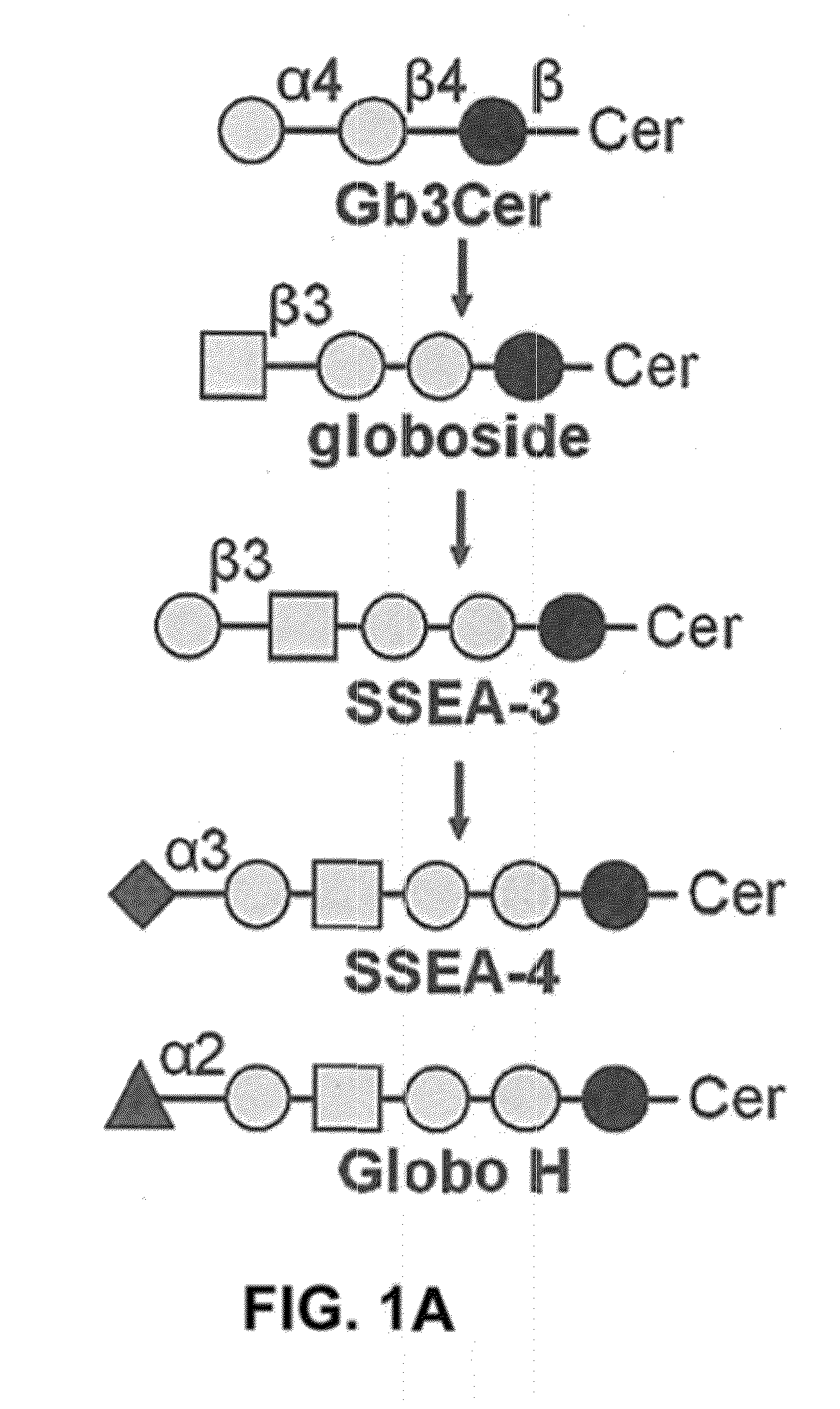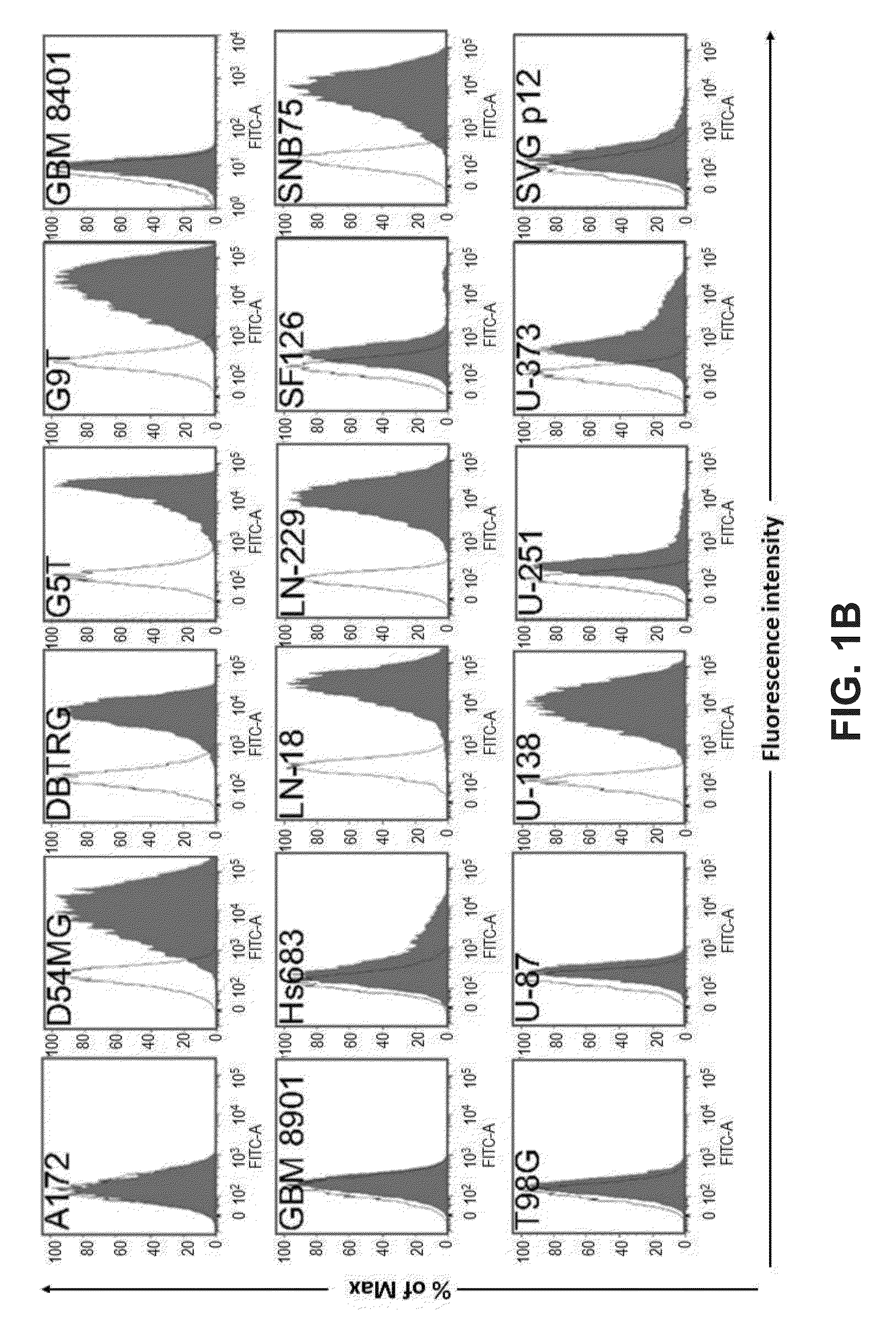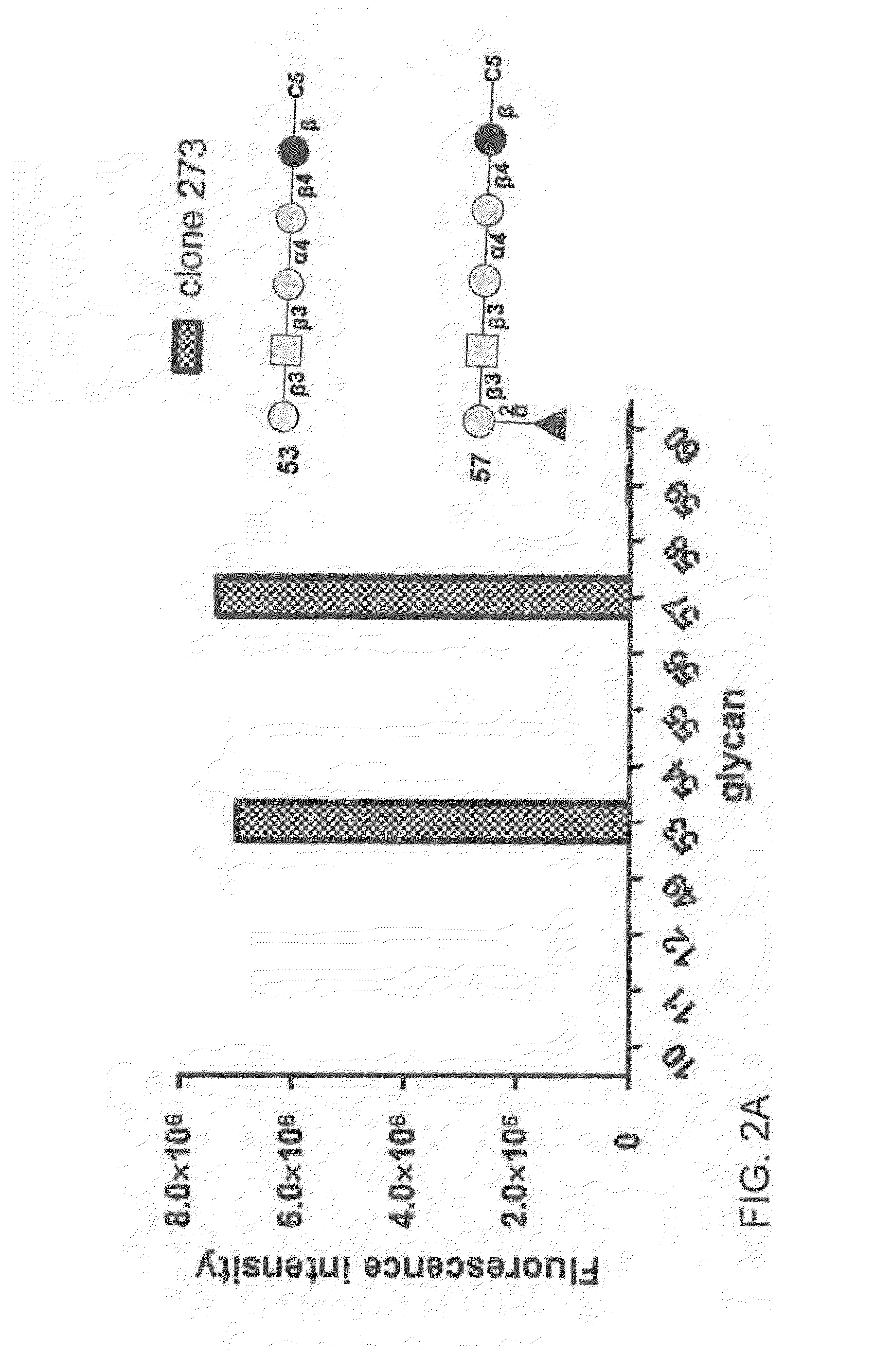Compositions and methods for treatment and detection of cancers
a cancer and cancer technology, applied in the field of cancer cancer compositions and methods, can solve the problems of poor survival rate, tumor recurrence or progression, and poor prognosis of gbm patients, and achieve the effects of reducing tumor size, preventing metastasis, and eliminating malignant cells
- Summary
- Abstract
- Description
- Claims
- Application Information
AI Technical Summary
Benefits of technology
Problems solved by technology
Method used
Image
Examples
example 1
Flow Cytometric Analysis of Glycan Epitopes on GBM Cell Lines
[0484]We analyzed the expression levels of various glycan epitopes by flow cytometry in four human GBM cell lines: G5T, LN-18, U-138 and U-251. The glycan epitopes examined include O-linked glycans (Tn, sTn, TF), Lewis antigens (Lex, Ley and sLex), complex gangliosides [GM2, GM1, GD1a, GD3, GD2, GT1b and A2B5 (c-series gangliosides)], and globo-series GSLs (SSEA-3, SSEA-4 and Globo H; FIG. 1A). Our results showed that most of these four GBM cell lines expressed high levels of Tn, TF, Lex, and Ley, a low level of sLex, and no sTn (Table 7). In addition, these four GBM cell lines were positive for all the gangliosides we examined. Regarding the expression levels of globo-series GSLs, U-251 showed a weak staining for an anti-SSEA-4 antibody, MC813-70, and G5T, U-138 and LN-18 displayed a high staining intensity for MC813-70 (FIG. 1B). Positive staining for an anti-SSEA-3 antibody, MC631, was only observed on G5T among these f...
example 2
Verification of SSEA-4 Expression in GBM Cancer Cells
[0485]To exclude the possibility that anti-SSEA-4 antibody may bind to the extended core 1 O-glycan on glycoproteins in GBM cells, we treated DBTRG cells with methanol to remove lipids before staining with an anti-SSEA-4 antibody, MC813-70. Upon methanol treatment, the immunoreactivity of MC813-70 disappeared, as analyzed by flow cytometry and immunofluorescence microscopy, suggesting that the immunoreactivity of MC813-70 was toward glycolipids, not glycoproteins. To confirm the existence of SSEA-4 epitope on GBM cell surface, we further performed the MC631 staining on α2,3-sialidase-treated DBTRG cells, and the result showed that when treating with α2,3-sialidase, the cells became MC813-70 negative and MC631 positive, supporting that the GBM cells did express SSEA-4.
[0486]To further verify the expression of SSEA-4, we next purified the gangliosides (the glycolipids with sialic acids) using anion-exchange chromatography, developed...
example 3
Expression of SSEA-4 in GBM Tissues
[0488]SSEA-4 is a widely used marker for stem cells, but the information about the expression of SSEA-4 in GBM tissues as well as normal brain tissues is not known. To understand if SSEA-4 is overexpressed in clinical GBM specimens, in addition to GBM cell lines, we analyzed the expression of SSEA-4 among astrocytomas from grade I to IV and normal brain tissues by immunohistochemistry on human tissue microarrays (FIG. 4). We found that 38 out of 55 GBM tissue specimens (69%) were positive for MC813-70 staining, and around half of GBM specimens were intensely stained (≧2+). As shown in the positive specimens, SSEA-4 was situated on the plasma membrane of GBM cells. Furthermore, around 55% of low-grade astrocytoma specimens were weakly stained (scored as 1+) by MC813-70, and the scores of SSEA-4 intensity was positively correlated with the grades of astrocytomas. On the contrary, most normal brain tissues were SSEA-4 negative. The result showed SSEA-...
PUM
| Property | Measurement | Unit |
|---|---|---|
| Immunogenicity | aaaaa | aaaaa |
| Reactivity | aaaaa | aaaaa |
Abstract
Description
Claims
Application Information
 Login to View More
Login to View More - R&D
- Intellectual Property
- Life Sciences
- Materials
- Tech Scout
- Unparalleled Data Quality
- Higher Quality Content
- 60% Fewer Hallucinations
Browse by: Latest US Patents, China's latest patents, Technical Efficacy Thesaurus, Application Domain, Technology Topic, Popular Technical Reports.
© 2025 PatSnap. All rights reserved.Legal|Privacy policy|Modern Slavery Act Transparency Statement|Sitemap|About US| Contact US: help@patsnap.com



